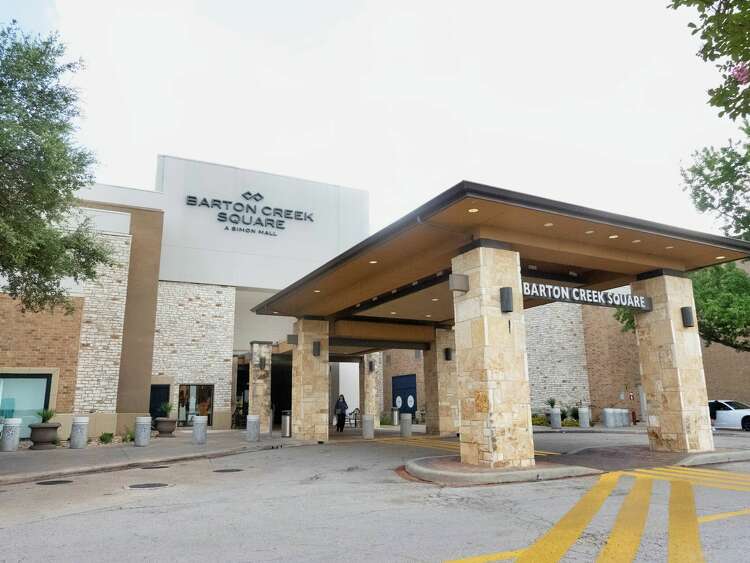Last Indoor Mall in Austin Revealed

The Evolution of Mall Culture
In the 1980s, 1990s, and early 2000s, malls were more than just places to shop—they were social hubs where young people gathered to hang out, gossip, flirt, and even break up. While shopping did happen, it was often secondary to the experience of being in a mall. These spaces became synonymous with youth culture, serving as a backdrop for countless memories and moments of personal growth.
Over the years, the appeal of malls began to wane. The 2008 recession, the rise of online shopping, and the pandemic all contributed to the decline of traditional mall culture. Many once-bustling centers turned into "dead malls," empty structures that stood as reminders of a bygone era. In cities across the U.S., these ghost towns have become common sights.
In Austin, several malls have closed over the years, including Northcross Mall in 2007, The Dobie Center on the UT Campus in 2010, and Highland Mall in 2015. Today, Barton Creek Square Mall is the last remaining '90s-style indoor mall within the city limits. Initially, many expected it to feel different or even sad, with old stores gone and the vibrant energy of youth no longer present. However, despite changes, there are signs that mall culture might be making a comeback at Barton Creek Square.
A Glimpse into the Past
Barton Creek Square Mall first opened its doors in August 1981, but the concept of indoor malls had been around for about three decades prior. The '80s and '90s saw a surge in mall construction, and movies like Fast Times at Ridgemont High, Clueless, and Mallrats helped cement the image of the mall as a central part of youth culture.
During the '90s and early 2000s, Barton Creek Square Mall was a picturesque example of this era. Its wide walkways featured fountains and giant palms, while shops like Gumballs, Gadzooks, Spencer's, and Lonestar Illusions lined the corridors. There was a KB Toys, and later, the Disney Store—a big deal when it arrived. The food court included an Orange Julius and a Chinese restaurant whose name has faded from memory, but its free samples were legendary. Other dining spots included Olga's Kitchen and Chelsea Street Pub, offering a variety of options for shoppers.
Fashion during this time was shaped by stores like BeBe, Buckle, Wet Seal, Benjamin's, Hot Topic, Journey's, The Limited, Claire's, Agaci Too, and Abercrombie. Teens would spend their allowances on trendy clothes and accessories, while others enjoyed arcade games at Aladdin's Castle or listened to CDs at Camelot Music. Suncoast Motion Picture Company provided VHS rentals, making it a staple for movie nights.
The mall also featured large department stores such as Dillard's, JCPenney, Montgomery Ward, Foley's, and Sears. Each store had its own unique atmosphere, with multiple levels and sections. The mall's movie theater was initially separate from the main area, but in 1999, the Barton Creek Square 14 debuted, eventually taken over by AMC in 2002. It served as a convenient excuse for teens to sneak off to parties, though not always successfully.
A Look at the Present
After nearly two decades away, walking through Barton Creek Square today reveals a mix of nostalgia and modernity. The wide walkways, once filled with greenery and fountains, now feature kiosks selling knickknacks and lounge areas with phone chargers. Many of the nostalgic stores—Gadzooks, Gumballs, Camelot Music, and even larger ones like Foley's and Montgomery Ward—are gone, replaced by Apple Stores, Lululemon, Lego Stores, Macy's, and Nordstrom.
Sears filed for bankruptcy in 2018, leaving its space as a dead end in the mall's layout. Nearby, new stores are set to open, including a virtual reality experience. Despite these changes, some familiar names remain. Stores like Journey's, Claire's, Hot Topic, and Spencer's still exist, though they're located in different parts of the mall. Abercrombie has held onto its original spot, and Dillard's and JCPenney have remained largely unchanged.
The food court remains the mall's central gathering place, even though the restaurants have evolved. Young people continue to fill the space, spending time with friends, eating, and shopping. For many, the mall feels like a throwback to the '90s, with fashion trends making a return and stores selling similar items as before.
A New Era for Mall Culture
While it's unclear if Barton Creek Square is experiencing a true comeback, it's clear that the mall still holds a special place in the hearts of many. Whether it's because it's the last indoor mall in the city or simply because it offers a refreshing escape from the heat, the mall continues to draw crowds.
For older generations, it's a source of nostalgia, while for younger people, it's a novel experience. As millennials and Gen Xers who grew up in the mall have children of their own, the next generation is learning about mall culture through their parents and media. This blend of past and present ensures that Barton Creek Square remains a unique and cherished space.
In a world where everything can be accessed from a smartphone, the mall still offers something special: a physical space where people can gather, connect, and create memories. With its mix of old and new, Barton Creek Square stands as a testament to the enduring appeal of mall culture.

Post a Comment for "Last Indoor Mall in Austin Revealed"